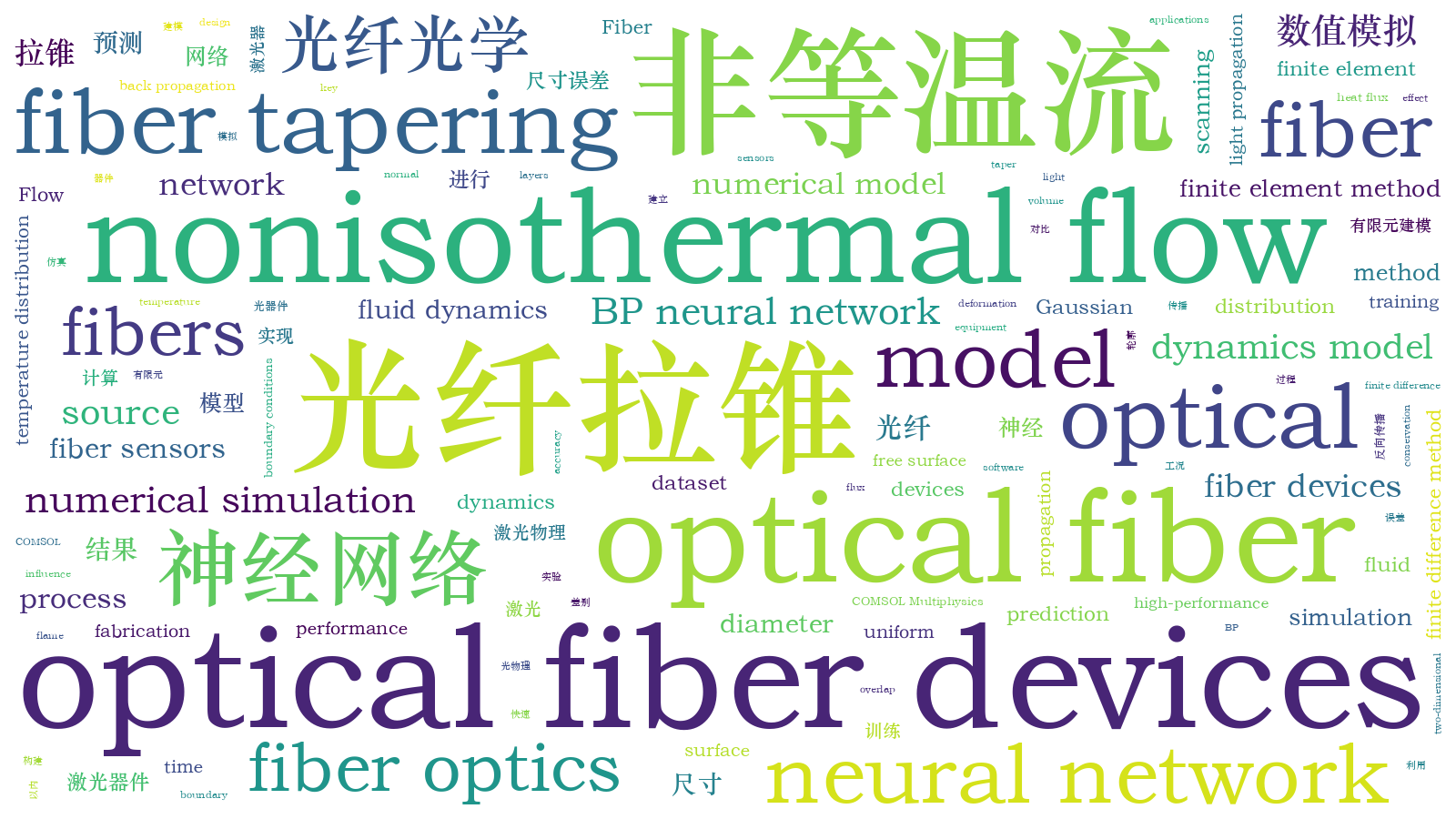基于非等温流模型与神经网络的光纤拉锥尺寸预测
Optical fiber tapering is a key process in the fabrication of optical fiber devices such as fiber combiners, fiber sensors, and fiber multiplexers. The tapered section has a significant influence on the light propagation state and directly relates to the performance of the fiber devices. Consequently, the precise prediction of the diameters of tapered optical fibers is increasingly important for the design and fabrication of high-performance optical devices. A straightforward and convenient analytical model based on volume conservation during the optical fiber deformation process can be used to obtain the expressions for the tapered optical fibers. However, this model only focuses on the tapering process under an ideal uniform heat source and scanning point heat source. A fluid dynamics model is an alternative method for studying the tapering process of optical fibers. With the help of numerical methods such as finite element method and finite difference method, the fluid dynamics model can also be used to obtain the diameters of the tapered optical fibers. Because more practical boundary conditions can be applied, the fluid dynamics model is applicable to the tapering process under complicated conditions, such as scanning nonuniform heat sources. In this study, a nonisothermal flow model is built using the finite element method to study the tapering process of optical fibers. With the tapering diameters obtained from the nonisothermal flow model, a back propagation (BP) neural network is then built and trained to achieve fast prediction of the tapering diameter for engineering applications.
First, a nonisothermal flow model of optical fiber tapering is implemented in the finite element software COMSOL Multiphysics. A two-dimensional axisymmetric model of optical fiber is built, normal outflow velocity is applied to both ends of the optical fiber, and general inward heat flux and free surface conditions are applied to the surface of the optical fiber (Fig. 1). With this numerical model, the tapering of optical fibers under different conditions can be simulated. Second, tapering experiments are conducted using tapering equipment with an oxyhydrogen flame (Fig. 3(a)), and the tapered optical fibers are then scanned to obtain the diameters. The comparison of the simulation and experimental results verifies the validity of the nonisothermal flow model. Third, a BP neural network including one input layer, two hidden layers, and one output layer is built in Matlab (Fig. 4). The input of the network includes the initial fiber diameter, length of the heat zone, distribution coefficient of the heat source, and tapering time, and the output of the network is the final taper diameter. The training dataset for the network is generated using the simulation results of the tapering diameters under a fixed Gaussian heat source. Specifically, the training dataset includes 240 simulations with initial input diameters of 100, 200, 300, and 400 μm, heat zone lengths of 4, 6, and 8 mm, heat source distribution coefficients of 0.002, 0.003, 0.004, and 0.005, and tapering time of 20, 40, 60, 80, and 100 s.
The diameter differences between tapered profiles calculated using the nonisothermal flow model and those measured in the tapering experiments are within 6 μm, which verifies the accuracy of this numerical model (Fig. 3(b)). The simulation also successfully predicts the absence of a waist in the tapered profile, which is due to the nonuniform temperature distribution in the heat zone and the overlap effect of the heat source during scanning. The BP neural network predicts the tapering diameter of 360 μm fiber, and the difference between the predicted and simulated results is within 1.7 μm (Fig. 5).
In
李力, 郑家容, 马修泉. 基于非等温流模型与神经网络的光纤拉锥尺寸预测[J]. 中国激光, 2023, 50(11): 1101015. Li Li, Jiarong Zheng, Xiuquan Ma. Prediction of Optical Fiber Tapering Diameter Based on Nonisothermal Flow Model and Neural Network[J]. Chinese Journal of Lasers, 2023, 50(11): 1101015.







